
21 minute read
Retail Technology, 2021 (cover
Bricks and Mortar Retail: New Demands on Engineers and Designers
To complement the burgeoning on-line retail market, bricks and mortar stores will be putting new demands on their technology and MEP infrastructure
By Tom Bailey, AIA and Sean Phelan, Associate AIA
In a recent article in the New York Towns Magazine, we explored the effects of online shopping and COVID on the future of Bricks and Mortar retail. In particular, our HUNT engineers, architects, and economic developers sought to develop a primer for town officials, property owners, and retailers seeking to create vibrant Main Streets that will appeal to both their current residents and those they would like to attract.
This article, like the NY Towns’ snapshot is modest in scope, attempting to flesh out and identify the various technological, physical, and engineering elements that comprise a “typical retail store” and how an engineer and architectural designer might help a town official or property owner prepare that physical space for the future of retail.
Although we start with what will sound like a doomsday statistical scenario of trends, store closings, and deep challenges to the traditional retail model, we believe there is enormous opportunity in the near and long term for retailers and engineer designers if they accept the inevitability of on-line shopping and create spaces that answer the “continued” need for a customer-centric “experience”, however different than the one of even several years ago.
First, we look at the smart phone’s role in this sea of change, layout the current economic statistics, and suggest several likely scenarios. For the purposes of this audience, we disassemble the basic elements of a prototypical retail store and attempt to illuminate even a few of the changes already in place and others likely to come…. for example, “Why have a cash register when I can go to Amazon Go, open my Prime app, put my food in my cart, and walk out the door without talking to soul!?” (30 stores now open and coming to your neighborhood soon....)
Identifying and attracting ‘just the right mix” of retailers to New York’s Main Streets has always been topic number one at community planning, business, and economic development meetings. Shy about being too prescriptive, many of those conversations use to turn more on which “retailers were not wanted”, with adult bookstores, cell phone stores, strip clubs, and rowdy nightclubs, for example, being told they were unwelcome or pushed to the edge of towns. At the same time, even before the tsunami known as on-line shopping, competition from malls and big-box retailers camped on the edge of town had already left vacant storefronts or windows covered by the shades of professional services – accounting, legal, and non-goods tenants.
COVID...an Accelerant not the root cause of Bricks & Mortar Stores’ troubles
In early 2021, with virtually all of us carrying smart phones, we forget that the smart-phone culture and the economy that has grown up around it is for all intents and purposes barely 15 years old. While the phrase “smart phone” was coined in 1995, the addictive power of the Blackberry (‘crackberry’) did not take hold until around 2005, with the first iPhone being introduced in 2007 and Android systems in 2008. Between 2011-2014, the sophisticated touchscreens and camera software we now take for granted started to appear as standard phone features, and with them the battle truly commenced for the approximately $27 Trillion worldwide, retail consumer market.
Retail Snapshot: By the Numbers
Fast forward to 2020, and it is easy to blame the COVID-19 pandemic and the quarantining of America for the rapid downsizing and bankrupting of famed retailers like GNC Nutrition Center, Pier I Imports, Men’s Wearhouse, Stein Mart, JC Penney, Bed, Bath & Beyond, etc… And, in fact, according to the US Census Department, US retail sales were anticipated to have fallen in 2020 by 10.5% (from $5.47T to $4.89T), with over 8,000 stores reported to have closed in 2020 and more than 10,000 more at risk in 2021. (Counterbalancing those losses, more than 3,000 stores are expected to open in 2021, and the retail industry continues to be the largest private-sector employer. Amazon’s 'lastmile' delivery service alone employs over 500,000 contractors).
The on-line competition is daunting for Bricks and Mortar stores that cannot adapt to the changing landscape. A reported 66% of consumers go first to Amazon alone when considering a purchase, and in early February 2021, the New York Times reported that propelled by its “Prime fast-shipping program, which has more than 150 million members…Amazon had posted a record $125.6 billion in sales for the fourth quarter (2020), while profits more than doubled to $7.2 billion from a year earlier. It was the first time the company had exceeded $100 billion in sales in a single quarter…. Amazon shows no sign of pulling back from its ambition to push into more corners of the economy”.
Furthermore, the number of consumers now “preferring” on-line shopping crested 50% for the first time in 2020 (51%). A stunning 97% percent of consumers who had utilized on-line grocery store channels reported that they would do it again, and 73% of survey respondents prefer “multiple purchasing channels”.
At the same time, Bricks and Mortar sales continued to account for 90% of all purchases in 2019. A “personalized service experience” continues to be preferred by 75% of consumers, and another 49% report that not being able to “try on” – to touch a product -- before buying is their “least favorite” aspect of the on-line shopping experience.
Moreover, with US retail sales expected to grow to nearly $5.9 trillion in 2024, the incentive and opportunity for agile Bricks and Mortar retailers remains enormous. Their inherent advantage in creating a shopping “experience” is still formidable, with senior brand managers of all stripes acknowledging that “customer experience” remains the key ingredient in realizing a sale. “The retail and consumer goods industries will change more in the next 10 years than they have over the past 40," says Oliver Wright, managing director, global consumer goods lead, Accenture Strategy. "As expectations around cost, choice, convenience and experience continue to increase, consumers will challenge the industry to evolve and innovate which will drive huge growth in digital commerce."
Specifically, we see the transformation described by Oliver Wright as occurring in two phases, the near term, wherein there is still desire, wealth, and commerce to be gained from the existing retail models, and the longer term, when ubiquitous and powerful broadband capacity drives a completely different consumer modelled one by the continued ease of on-line shopping and delivery (think drones) and an experiential, in-store sales model driven by virtual reality, retina scanning, personalized 3-D avatars, etc…..
With Apple store and Amazon Go in-store experiences the new standard, fixed cash-register sites are already being phased out by many retailers in lieu of iPad-carrying sales representatives. Similarly, Bricks and Mortar designers and retailers are only beginning to capitalize on the promise of Organic Light Emitting Diode (OLED) luminaires, displays, and “window treatments’, and their ability to personalize a store for an individual consumer, event, or time-of-day.
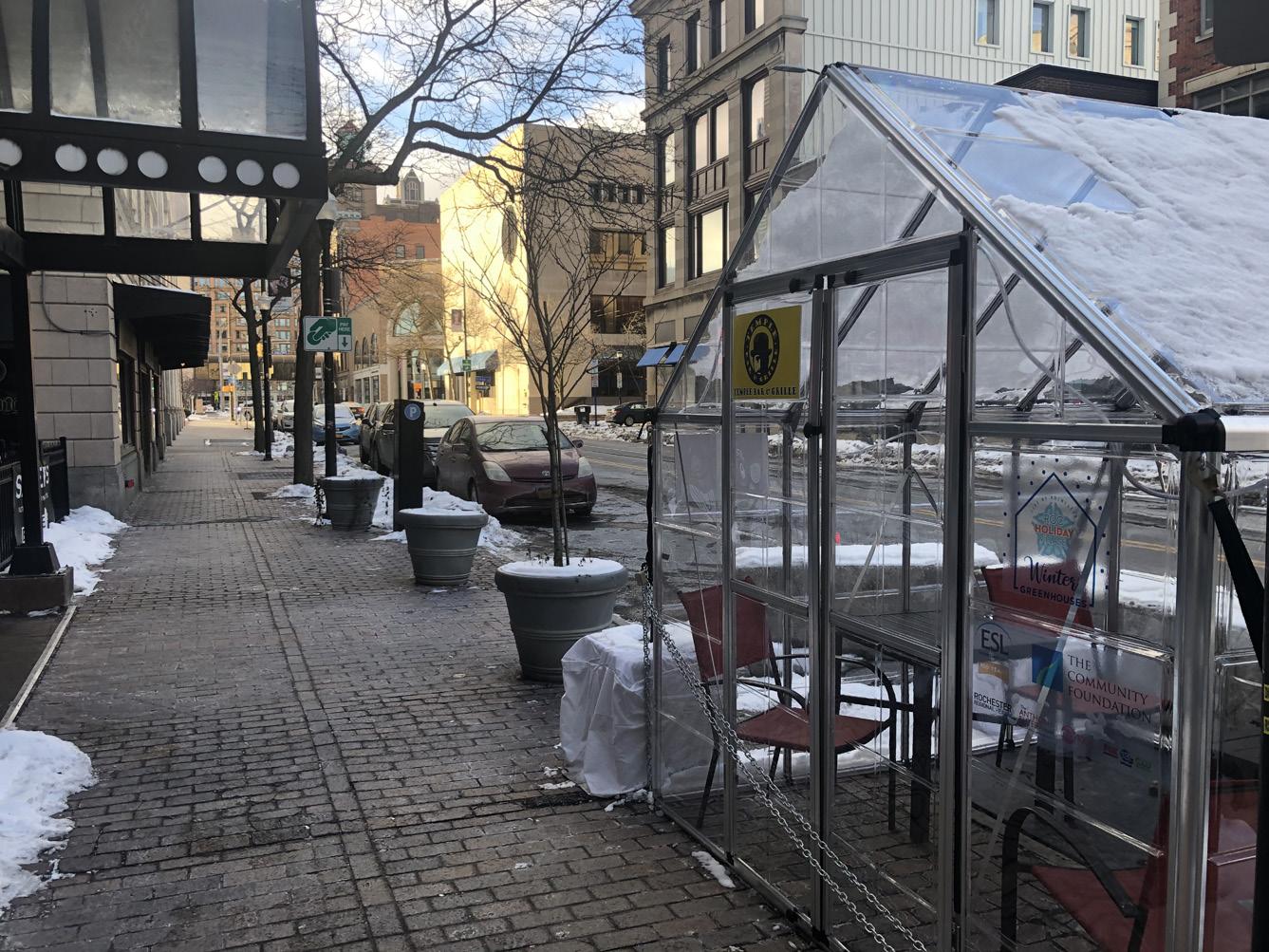
An Answer to COVID - East Avenue Rochester
In a recent RetailDive interview, retail futurist Doug Stephens asserted that Bricks and Mortar stores, have become “powerful media channels”, not the final “purchase channel”, with on-line media being the actual “ultimate store”.
What is the Main-Street property owner, retailer, and town official who lacks sheer population density, neighboring college, or a dramatic physical tourist location to do? With remote-working-models allowing for flight from expensive major cities, how do town managers create compelling Main Streets to service their existing residents and attract new ones?
In Outside Magazine’s most recent Best Towns listing, each city or town roughly shared the following attributes: at least one vibrant retail district comprised by art galleries; multi-use gathering spots (think lawn games, pop-up retail kiosks, craft beer and food); gyms and yoga studios; “maker spaces”; and, not surprisingly, bike and gear shops, walkability, and ready access to outdoor activities.
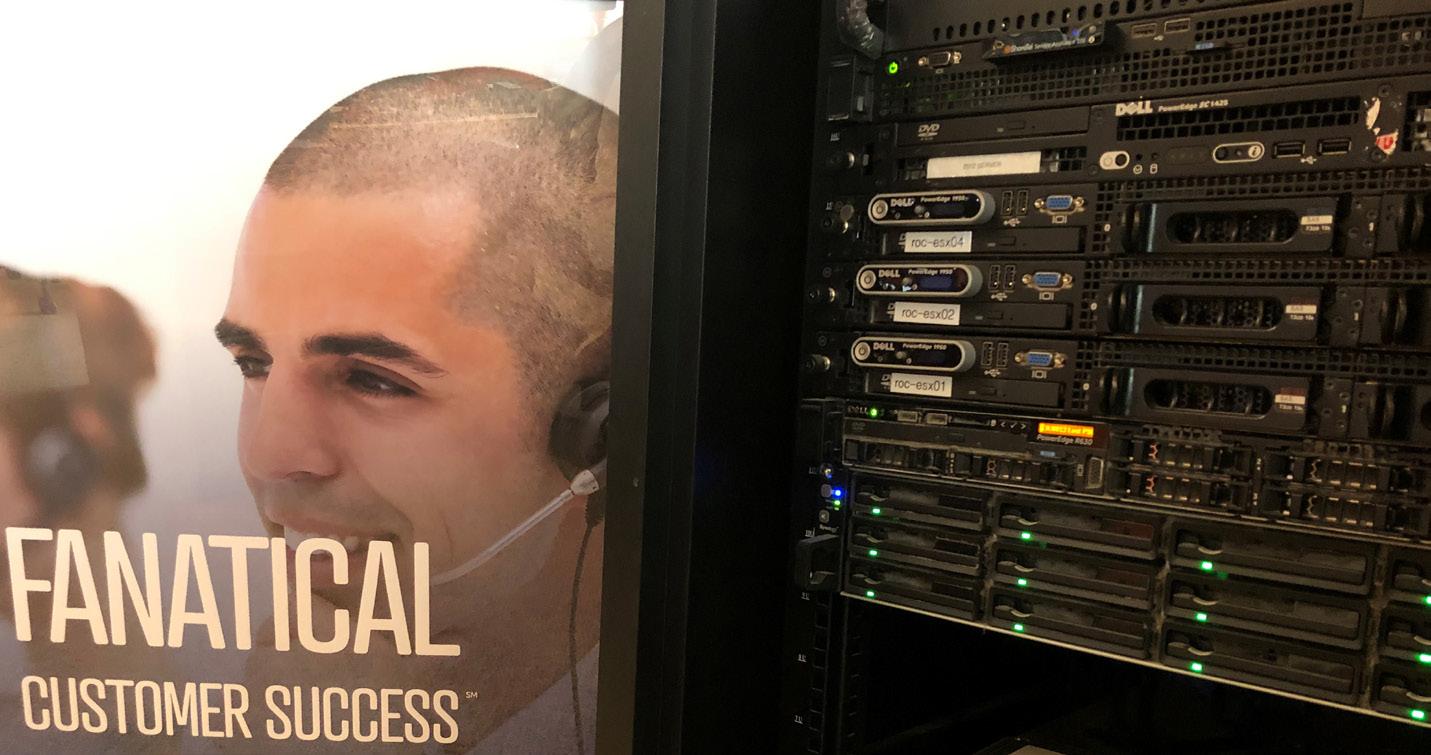
Customer Service tops Bricks and Mortar Priorities
The point of this article is to help our municipal, property owner, and developer clients make the most of the next several years, not to rehash history or shy from viewing on-line retail as asset. We hope this primer will help you imagine, plan, and spark deeper conversations about what Main Street Bricks and Mortar spaces will look like in five-to-ten years, and then again in ten-to-fifteen years as robust broadband, software improvements, and virtual and artificial reality truly takes hold.
Written from the perspective of HUNT’s engineers, technologists, and architects, our goal is to directly address the physical design issues that they are currently confronting, e.g…
• What do we include in the design and development of a new building or space for potential retailers?
• How do we renovate an existing building for on-demand retailers not needing copious storage, but needing robust broadband and a personalized customer experience that complements if not surpasses the on-line shopping experience?
• How do municipalities continue to offer their residents and visitors a vibrant street-level experience that supports their tax bases and attracts more growth and development?
To keep our focus, when we refer to retail in this article, we are generally not including restaurants, bars, and coffee shops. In addition, our emphasis is on the smaller retail strip plazas and standalone stores where our audience can act quickly, make changes today, and/or create a checklist of goals.
What Constitutes a “Store”: The Basics Remain the Same but Social Media and E-Commerce Changes Everything
Understanding your building and your client – a brief primer into what costs confront your retailer, and in doing so, where can you help them improve their customers’ experience. Whether an established retailer or startup, the costs associated with opening a store are generally as follows:
1) business plan development and market research; 2) rent; 3) signage; 4) website; 5) utilities; 6) insurance; 7) social media; and 8) staffing.
Below we break out the particulars of signage and utilities -- energy management. These are the areas where the readers of this article can immediately and directly assist their clients. At the same time, we would like to linger a bit more with the website and social media costs.
No longer static “advertising flyers on steroids”, websites and social media tools are integral parts of the retail experience and consequently demanding of IT infrastructure, energy, and physical space both for personnel to execute and within the store proper.
With websites becoming the “actual store” and the Bricks and Mortar space more a “showroom and part of the experiential package”, retailers must include associated energy and salaries into their cost structure. Meanwhile, social media no longer simply means photos of a ribbon-cutting and event announcement (although it does still mean that….). Social media is an ongoing relationship with the customer as they begin their search for a product, when visiting your store (you will need to “know” them before they come in and customize their visit), and after the purchase, they become your sales force. Who doesn’t like being called an “influencer” when singing the praises of your favorite jeans?
Ninety percent of retailers, both Bricks and Mortar and e-commerce sites, use social media for customer service interactions. This is yet another expression of consumer’s demands for a 24/7 experience and purchasing opportunity. This shift is propelled by a millennial audience who shop online 67% of the time (versus their baby boomer counterparts, who continue to frequent Bricks and Mortar locations for 72% of their purchases).
Not surprisingly, as the boomers’ shopping interest wanes, so too does the popularity of malls, where sales hit a 20-year low in 2019. Sophisticated mall owners are attempting to counter those declines with pop-up retail kiosks, seasonal and holiday stores, and the transformation of big boxes into experience centers like go-karts, wallclimbing centers, sports and games venues, etc – each of which creates another level of MEP and technology design complexity.
Energy Management: MEP Engineers Help Reduce Costs and Save Monies Needed Elsewhere
Approximately 657,000 retail buildings (stand-alone facilities, strip malls, and enclosed malls) in the US consume more than $20 billion of energy each year. A huge potential exists to reduce this energy consumption and save on operational costs. According to National Grid, “Retail buildings in the U.S. spend an annual average of $1.21 per square foot on electricity and .14cents per square foot on natural gas. In a typical retail building, lighting, cooling, and heating represent between 69 and 84 percent of total use depending on climate, making those systems the best targets for energy savings”.
Savings from energy management initiatives can be as low as 1% for occupant sensors and as high as 30% or more for comprehensive lighting upgrades. Actual savings available vary by site and depend upon the characteristics of the building and the retailer’s level of buildings operational control. A study by the US Department of Energy’s Pacific Northwest National Laboratory estimates that a reasonable range of energy savings potential in existing commercial buildings is between 10 and 20%. A United States Environmental Protection Agency report, Sector Collaborative on Energy Efficiency Accomplishments and Next Steps, has identified energy savings potential up to 21% for supermarkets and up to 41% for retail stores. Based on the retail industry’s $20 billion spending on energy a year, a 15% potential energy reduction represents a $3 billion dollar opportunity to reduce costs.
Energy is the second highest retailer operating expense. Food and non-food retailers have different energy consumption profiles, mainly due to the use of refrigeration. Of their total energy consumption, food retailers consume 82% electricity and 18% natural gas/other fuels; their average consumption per square foot is 51.3 kWh ft². Because of the refrigeration and HVAC needs, food retailers consume three times as much energy per square foot as non-food retailers.
Cutting & Realigning Cost Centers: Shrinking Margins in a Marketplace Where Your Competitor Doesn’t Pay Rent - Why Energy Management Now Really Matters
Of the 650,000 retail buildings in the U.S, approximately 110,000 are shopping malls or strip malls. In these small format stores, control of energy consumption can be more challenging. These stores typically control the store’s lighting and have some limited HVAC control, but the landlord often controls the main HVAC system. Due to limited control, the potential energy reduction of small format stores is 3-10%. Large format stores can control most of their energy consumption (sometimes chillers and transformer rooms are excluded and controlled by a landlord). Because of this high level of control, they have an energy reduction potential of 20-30%. Retail Technology is those tech tools employed by all retailers – Bricks and Mortar or online that manage and optimize operations. According to the Gartner Group, retail technology spending is expected to continue growing at approximately four percent a year to more than $200 Billion as retailers’ spending on tech outpaces the majority of other industries. Whether updating existing buildings or designing new retail spaces, there are several straightforward recommendations for cutting energy costs and moving those found monies to newer cost centers: 1) “turn things off”; 2) “lower the temperature” and don’t waste energy in off hours; 3) don’t heat or cool extraneous spaces; 4) check and clean regularly - these aren’t difficult or complex tasks and employees of all experience can be brought into the process; and, 5) make wise and long term lighting, HVAC, and building exterior maintenance decisions – roofs, windows, and exterior lighting.
Additional measures include optimization of HVAC system controls, installation of variable speed drives, deployment of floating high-pressure controls for refrigeration applications, and measurement, monitoring, and benchmarking of site energy consumption.
Benchmarking and commissioning allow property owners and retailers to identify equipment and personnel training shortfalls, as well keep a conversation alive regarding improvements in these store procedures. In addition to protecting the investment in your “shell” – however it is ultimately configured – these practices will enhance the customer experience at just the time that experience is not only a differentiator, but a determinant of whether the businesses survive or not.
Retail Technology: A Shift in Emphasis as Tech Services Grow in Importance to Bricks and Mortar, Customer Experiences
Retail Technology is those tech tools employed by all retailers – Bricks and Mortar or online that manage and optimize operations. According to the Gartner Group, retail technology spending is expected to continue growing at approximately four percent a year to more than $200 Billion as retailers’ spending on tech outpaces the majority of other industries.
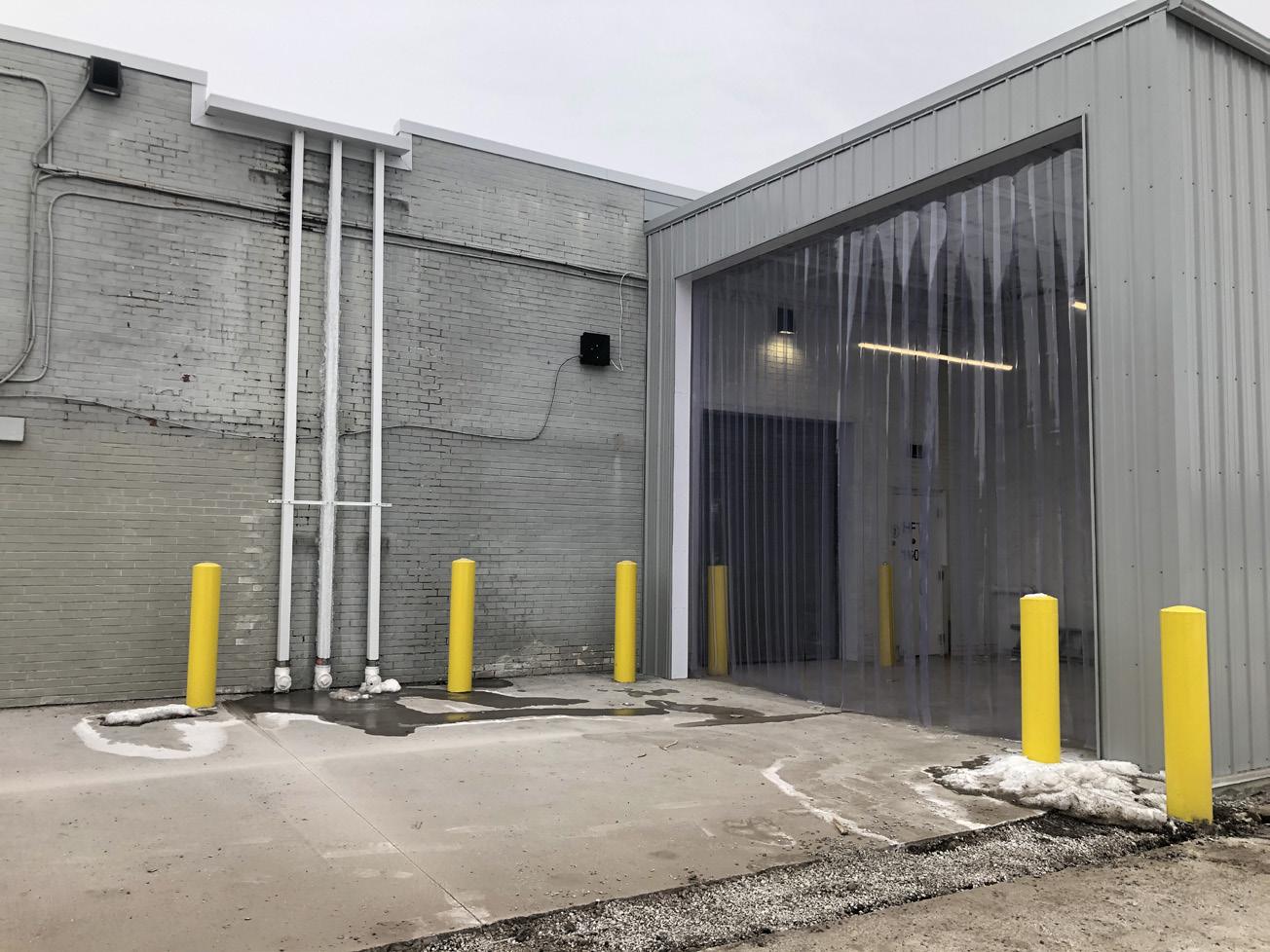
Shipping - Curbside Pickup design takes on new urgency in Penfield
A far cry from the launch of the first cash register in 1883, the bulk of the spending is expected to be on artificial and virtual reality, artificial intelligence, and the Internet of Things (IoT). The physical Bricks and Mortar expression can be seen most clearly in cashier-less stores, ubiquitous cameras (a full-service Wegmans may have as many as 150 cameras), shelve-screen interfaces, and personalized artificial intelligence and crowd-sourced in-store tracking.
For example, freed from the cash register and armed with an IPAD, sales associates can read credit cards anywhere in the store or at the curb, interactions with customers can be as personalized as desired, and loyalty programs and promotions can be created for specific customers.
Recent New York Times’ articles detailing travel patterns of cell phone users as it related to COVID-19 infection and political protesters underlined the enormous amount of data available to retailers and marketing groups as they target potential consumers and the in-store activities of existing clients.
“…At every other moment, the location data is reviewed by hedge funds, financial institutions, and marketers, in an attempt to learn more about where we shop and how we live… this new data included a remarkable piece of information: a unique ID for each user that is tied to a smartphone. This made it even easier to find people, since the supposedly anonymous ID could be matched with other databases containing the same ID, allowing us to add real names, addresses, phone numbers, email addresses and other information about smartphone owners in seconds. The IDs, called mobile advertising identifiers, allow companies to track people across the internet and on apps. ……there’s little appetite to meaningfully dismantle this advertising infrastructure that undergirds unchecked corporate data collection. This collection will only grow more sophisticated.”
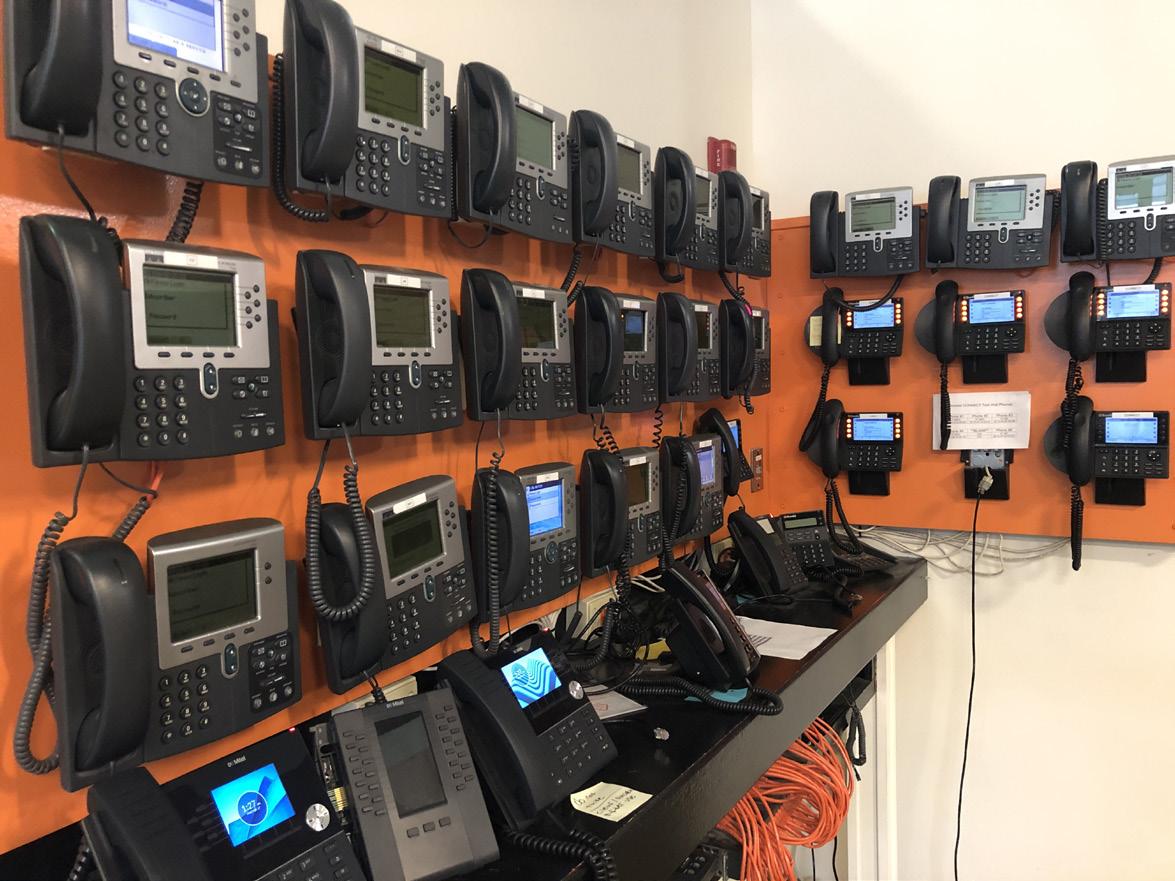
The New MEP Backbone
Less “ominously”, intelligent-shelf-monitoring allows retailers to streamline inventory and improve customer’s in-store experiences by freeing sales associates from unnecessary stocking. Moreover, the more sophisticated packages can track the effectiveness of visual displays and in-store, realtime promotions. Once again, this underlines the importance for engineers and architects of designing flexible display settings, providing ubiquitous broadband, and electric services – “Promotion not working? Product not selling? Immediate reconfiguration of the store!”
Bricks and Mortar retailers of 2021 continue to have many of the same costs as previous generations: rent, utilities, salaries, inventory, marketing, interior design and display “case” décor, etc… However, technology consultants and staff now play a far greater role in assisting owners in coordination of on-line purchases, curbside pick-ups, local deliveries, drive-through windows, and digitally enhanced, safe-in-store interactions.
Such design includes guaranteeing robust broadband and WiFi interactions, setting up and maintaining cloud-based POS systems, and potentially carving out office space for social media managers. One of the unintended effects of multi-channel customer interactivity with retailers is a much more complicated inventory tracking and subsequent “product return’ process. As noted elsewhere, consumers demand and desire for “convenience” has become a much more tangible retail component than ever before. POS systems help retailers manage inventory and supply-chain operations - a necessity as other digital commerce services exacerbate product-return issues, forcing both online and Bricks and Mortar retailers to handle far more returns than previously.
Bricks & Mortar, Practical MEP Design Applications: Freed of Ambiguity, Engineers Can Now Team with Architects and Interior Designers
First, the amount of square footage needed per retailer has been dramatically reduced, with traditional storage and display space needs dropping as the result of improved inventory control, real-time manufacturing capacity, and the consumer’s desire for the personalization of products before purchasing.
This begs the question of both what to do with store spaces configured for twenty years ago and how to divide square footage under existing rooftops. Among the answers are flex spaces and portable furniture; pop-up and easily transformed kiosks; and staged expansions wherein start-up retailers can expand their footprint as they grow and avoid unnecessary initial costs for unusable space. Curbside and store pickups of on-line purchases, locker systems, and self-service checkout counters will propel “front-of-store” designs and reconfiguration of storefronts, window treatments, sidewalks, and curb cuts. Already students of store design are reporting that the efficiency demands of “to-go-fulfillment-solutions” are driving a movement toward distinct spaces rather than inner-store department overlap.
Interior signage and design -- back to the experience -- must share the same attributes, with choices in lighting, color, and furniture becoming even more important. Do your customers prefer a utilitarian Walmart concrete and metal shelving-model that suggests aggressive pricing, or do they want a feeling of exclusivity and aspirational shopping -- art on the walls? A Nordstrom shopper will expect quite different amenities and customer service, propelling the location of cash registers and customer service centers. These are not new concerns, but the need the get it right has never been more urgent.
Luckily, the advent of 3-D modeling tools – REVIT and other platforms in that ecosystem, for example, have in the last decade made “getting it right” that much easier. The gap between the architectural and engineering teams have measurably shrunk as the latter – previously driven by their means and methods approach -- can now collaborate in a much more meaningful way. Such design efficiencies can also be seen in the output of laser/3-D scanners. With precise measurement of existing conditions, designers need to make far fewer site visits. The gap between “renderings” and reality continues to shrink, and with that design errors.
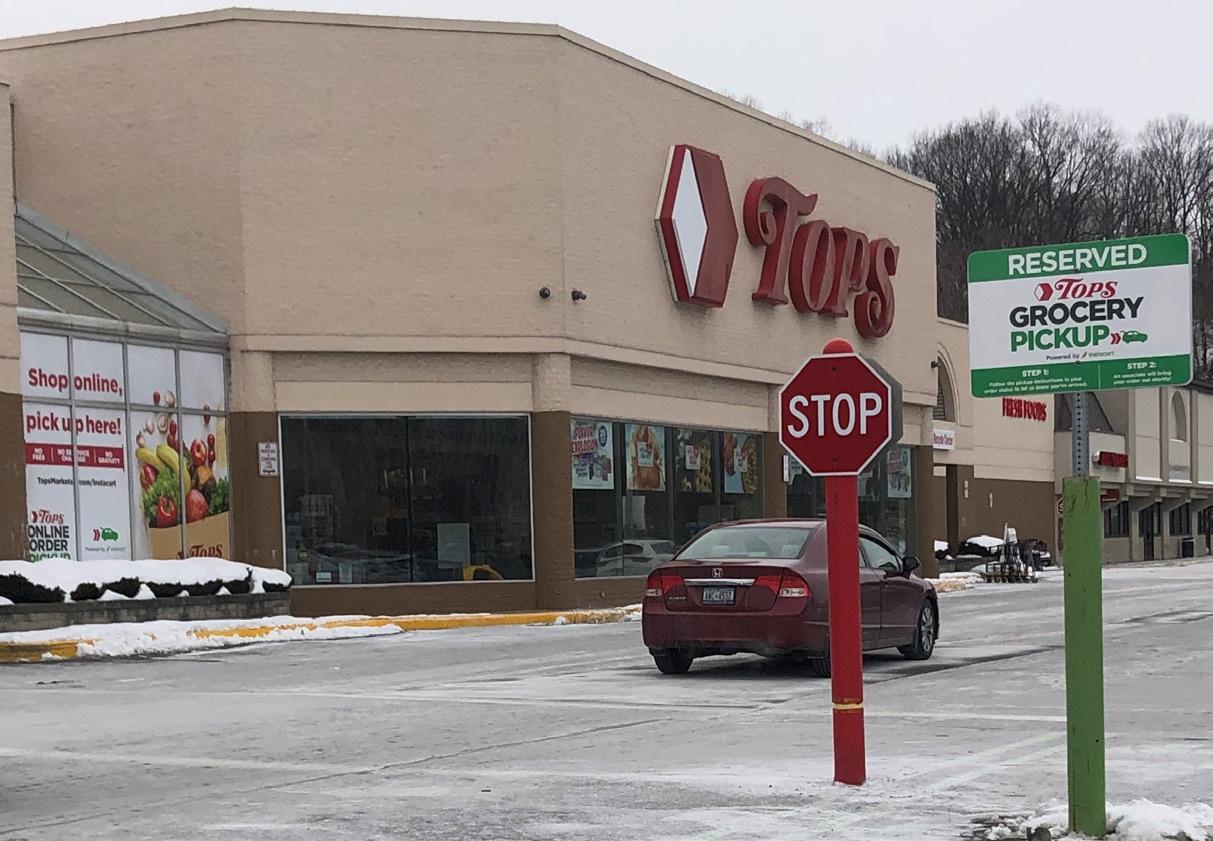
Order Ahead and Pick up
Where formerly simple ductwork and plumbing line connections needed to suffice, engineers are now encouraged to participate in the aesthetic design of a retail space…. Where previously architects set aside tremendous amounts of vertical “volume” for the engineers to fill with the hope that “clash detection” would be reduced by default, 3-D modeling allows engineers to respond with heightened precision.
Getting them to Main Street and Fulfilling their Orders……
So, you have made the physical changes to allow your stores and districts to compete, now how do we get them to leave the comforting “click-ability of their own sofa-storefront” and visit the Bricks and Mortar outlets?
While the desire for human interaction, the traditional “touchand-feel” of an item, and the dopamine reward of impulseshopping retains their allure, retailers have no choice but to acknowledge and compete with the web’s pricing and increasingly sophisticated and rapid-delivery capacity.
“Discounts and coupons, cooperative branding with adjacent stores and product suppliers, pre-sale social media engagement (invitations to a product event or opening), and then post-sale engagement and empowerment of consumers as your allied marketing team…. These are just a few of the tools left in the traditional retailer’s toolbox”, according to HUNT’s Tom Bailey, AIA, an architect and former Florida community planner. “Business and community leaders would also be wise to lobby for their government services offices to locate on Main Street and consequently bring consumers to town; to program events; and, to build secure and friendly public spaces. The WeWork remote-worker office rentals are great examples of attracting street-life and consumers.”
How does this express itself in the configuration of stores? For their part, national retailers have recognized their customers’ desire for downtown living and street-level experiences, with Target, Wegmans, and Dollar General (DGX) among others having designed urban-store models. At the same time, local retailers and restauranteurs are calling on engineers and architects to design an entirely new hybrid space. Buoyed by their successes in home and business deliveries, worried about withstanding future e-commerce inroads, and acknowledging the potential for future shutdowns, they are creating locally sited, “dark” stores and kitchens – thus, capitalizing on their local connectivity and completely bypassing the storefront retail experience.
About the authors: Tom Bailey, AIA is a HUNT Architect and former Florida City Planner with 48 years of experience in the design of retail and commercial office spaces. Sean Phelan, Associate AIA spent twelve years in downtown economic development at Rochester Downtown Development Corporation (RDDC) before joining HUNT’s Business Services division, where most recently he has played a role in a Genesee Valley economic development initiative.
Hunt Engineers, Architects, Land Surveyors & Landscape Architect, DPC (dba HUNT) has offices in Rochester and Horseheads, NY, as well as Towanda PA. There are currently 10 licensed professionals, our Director of Finance, and our Director of Technology as stockholders. Celebrating over 45 years in business, our full-service firm specializes in consulting and design for the following clients: educational, institutional, and private sector facilities (architecture and building systems, interior design, campus amenities, and athletic fields); municipal infrastructure (water and wastewater systems, storm water management); state and county transportation facilities; and technology consulting and design.
We have tried to “stay in our lane” with this article — aiming our analysis specifically at the Rochester Engineering Society’s readers. We have also tried to pack as much as possible in each sentence. We also know that at a click of Google you’ll find a much deeper perspective about any one of the topics we’ve even lightly attempt to shed light on. We hope you’ll share the best of those writings and your opinions.
Join the conversation with us at BaileyT@HUNT-EAS.COM and PhelanS@HUNT-EAS.COM.










